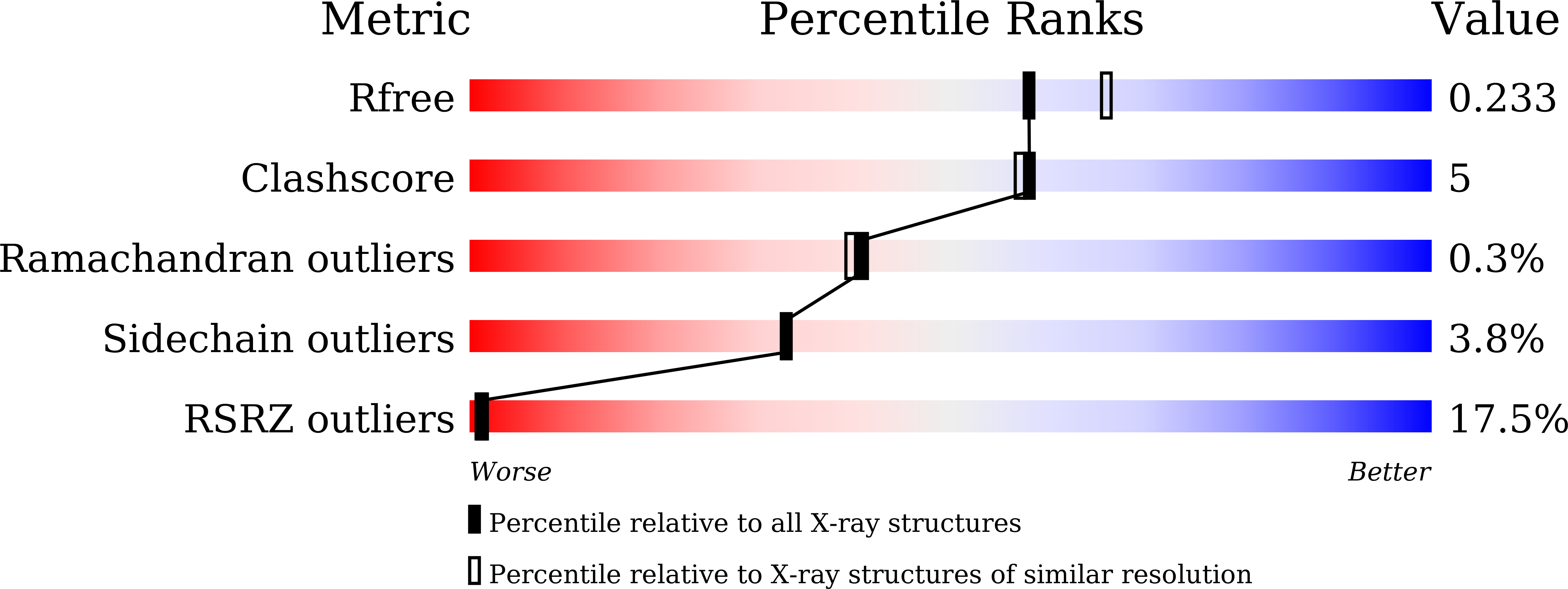PTP-MEG2 regulates quantal size and fusion pore opening through two distinct structural bases and substrates.
Xu, Y.F., Chen, X., Yang, Z., Xiao, P., Liu, C.H., Li, K.S., Yang, X.Z., Wang, Y.J., Zhu, Z.L., Xu, Z.G., Zhang, S., Wang, C., Song, Y.C., Zhao, W.D., Wang, C.H., Ji, Z.L., Zhang, Z.Y., Cui, M., Sun, J.P., Yu, X.(2021) EMBO Rep 22: e52141-e52141
- PubMed: 33764618
- DOI: https://doi.org/10.15252/embr.202052141
- Primary Citation of Related Structures:
6KZQ, 6L03 - PubMed Abstract:
Tyrosine phosphorylation of secretion machinery proteins is a crucial regulatory mechanism for exocytosis. However, the participation of protein tyrosine phosphatases (PTPs) in different exocytosis stages has not been defined. Here we demonstrate that PTP-MEG2 controls multiple steps of catecholamine secretion. Biochemical and crystallographic analyses reveal key residues that govern the interaction between PTP-MEG2 and its substrate, a peptide containing the phosphorylated NSF-pY 83 site, specify PTP-MEG2 substrate selectivity, and modulate the fusion of catecholamine-containing vesicles. Unexpectedly, delineation of PTP-MEG2 mutants along with the NSF binding interface reveals that PTP-MEG2 controls the fusion pore opening through NSF independent mechanisms. Utilizing bioinformatics search and biochemical and electrochemical screening approaches, we uncover that PTP-MEG2 regulates the opening and extension of the fusion pore by dephosphorylating the DYNAMIN2-pY 125 and MUNC18-1-pY 145 sites. Further structural and biochemical analyses confirmed the interaction of PTP-MEG2 with MUNC18-1-pY 145 or DYNAMIN2-pY 125 through a distinct structural basis compared with that of the NSF-pY 83 site. Our studies thus provide mechanistic insights in complex exocytosis processes.
Organizational Affiliation:
Key Laboratory Experimental Teratology of the Ministry of Education and Department of Biochemistry and Molecular Biology, Shandong University School of Medicine, Jinan, China.
















